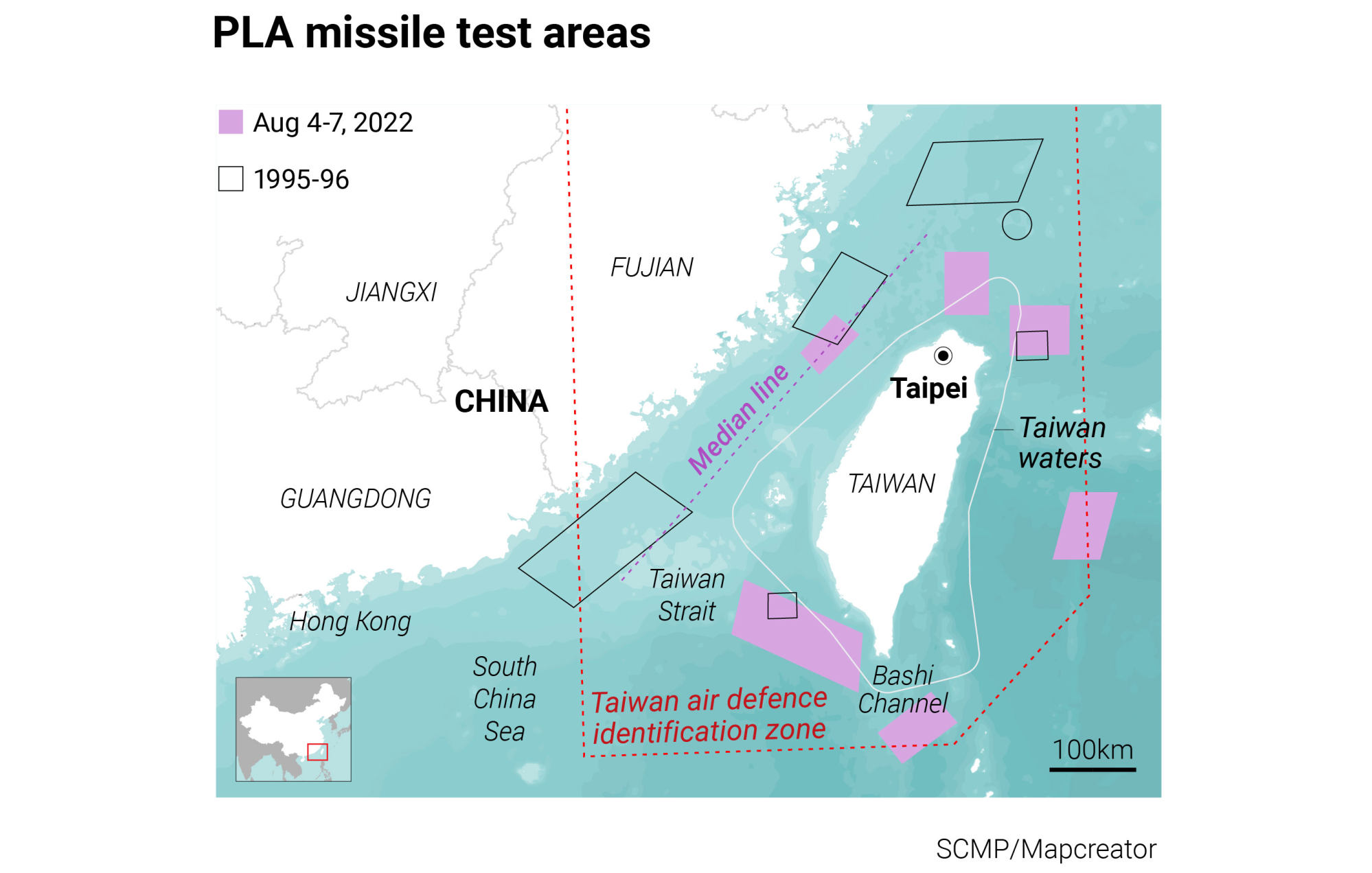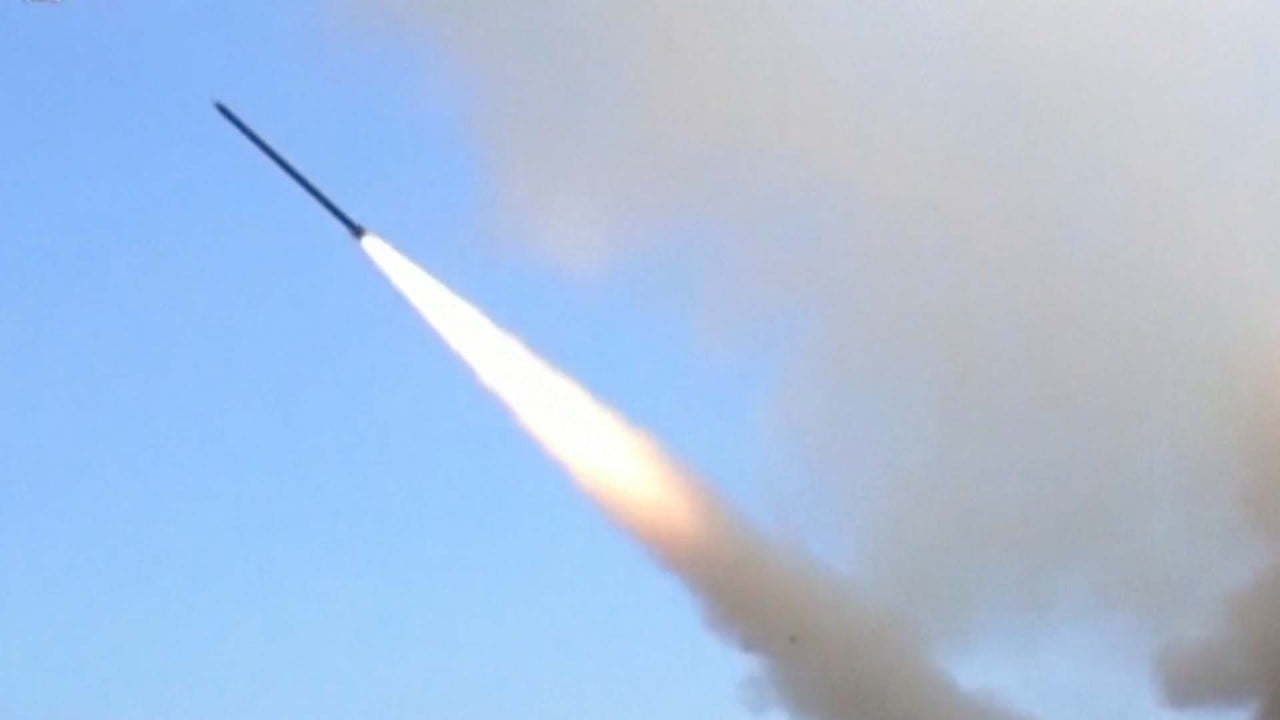
Why China’s war games around Taiwan are different this time
- The PLA has held missile tests aimed at the island before but it largely abided by a tacit understanding not to cross the median line
- Beijing is trying to send a message about its growing ability to blockade Taiwan, observers say
The waters near Taiwan have been the site of military crises over the decades – twice in the 1950s and again in the mid-1990s.
“From repeating advanced warnings, to the formal announcement and specific operations of the war games, the People’s Liberation Army wants to show the world that they are not only combat-ready for a Taiwan contingency, but also keeping all risks under control,” said Andrei Chang, editor-in-chief of Canada-based Kanwa Asian Defence.
Soon after Pelosi landed on the island on Tuesday night, the PLA announced it would set up six “danger zones” encircling Taiwan.
Most of the zones were well beyond the median line that separates mainland China and Taiwan while one of the areas straddled it.

The line was demarcated by US Air Force General Benjamin Davis in 1955 after the PLA took control of the Yijiangshan islands off Zhejiang province from Kuomintang troops.
Washington pressured both sides to enter a tacit agreement not to send military forces across the line and to maintain status quo of the strait.
The mainland refused to formally recognise the line but still complied.
The last time the PLA held missile tests aimed at Taiwan, all of the mainland’s warships stayed within the median line, and while a few warheads hit waters near Taipei and Kaohsiung, none of the missiles flew over the island.
Those tests were in 1995 and 1996 in response to a visit to the United States by the island’s first democratically elected president, Lee Teng-hui.
Taipei-based military expert Chi Le-yi said the 1995-1996 tests covered the north and south of Taiwan to block its air and sea routes and were to verify the army’s “missile blockade tactics”.
“However, this time, the PLA is going further to bring east Taiwan and the southwest Bashi Channel under its missile range coverage,” Chi said.
“This is a clear move aimed at showing how they would block the entrance of vessels and aircraft from the US and Japan to Taiwan in the event of a contingency.”
To do that, the PLA has used the drills to showcase its most advanced technology, including J-20 stealth fighter jets, a navy aircraft carrier, and upgraded long-range rockets.
It has fired ballistic missiles directly over Taiwan and sent drones over the airspace of Quemoy, Taiwan-controlled islands close to the mainland and also known as the Kinmen.
The Type 055 is regarded as the second most powerful destroyer in the world after the US Navy’s DDG-1000, or Zumwalt-class, stealth ship.
“The deployment of the Type 055 is aimed at deterring military interventions from the US and Japan, and helping the PLA to monitor and assess its ongoing war games,” said Zhou Chenming, a researcher from the Yuan Wang military science and technology think tank in Beijing.
Zhou said Beijing wanted to convey to Taiwan that it could blockade the island for three days and perhaps even longer.
It could do this he said because today’s PLA was more confident than in the 1990s, with a much more powerful navy and air force.
“The war games are unprecedented and complex, showing the mainland’s air and naval superiorities,” he said.
“But the mainland has been restrained, as it realises its great impact on the livelihood of Taiwanese people and regional stability,” he said, adding the PLA was launching missiles “within manageable proportions”.
Chang said the armed forces of Beijing, Taipei and Washington were all managing to avoid the risk of conflict.
Chi said Beijing also wanted to use the war games to reduce the risk of a full-scale challenge to its one-China principle because representatives from some countries were planning to follow Pelosi’s lead.
“In terms of political purpose, the ongoing war games aim to cause a post-event deterrent in the wake of Pelosi’s visit, preventing the US-Taiwan relationship from escalating and degenerating,” he said.



